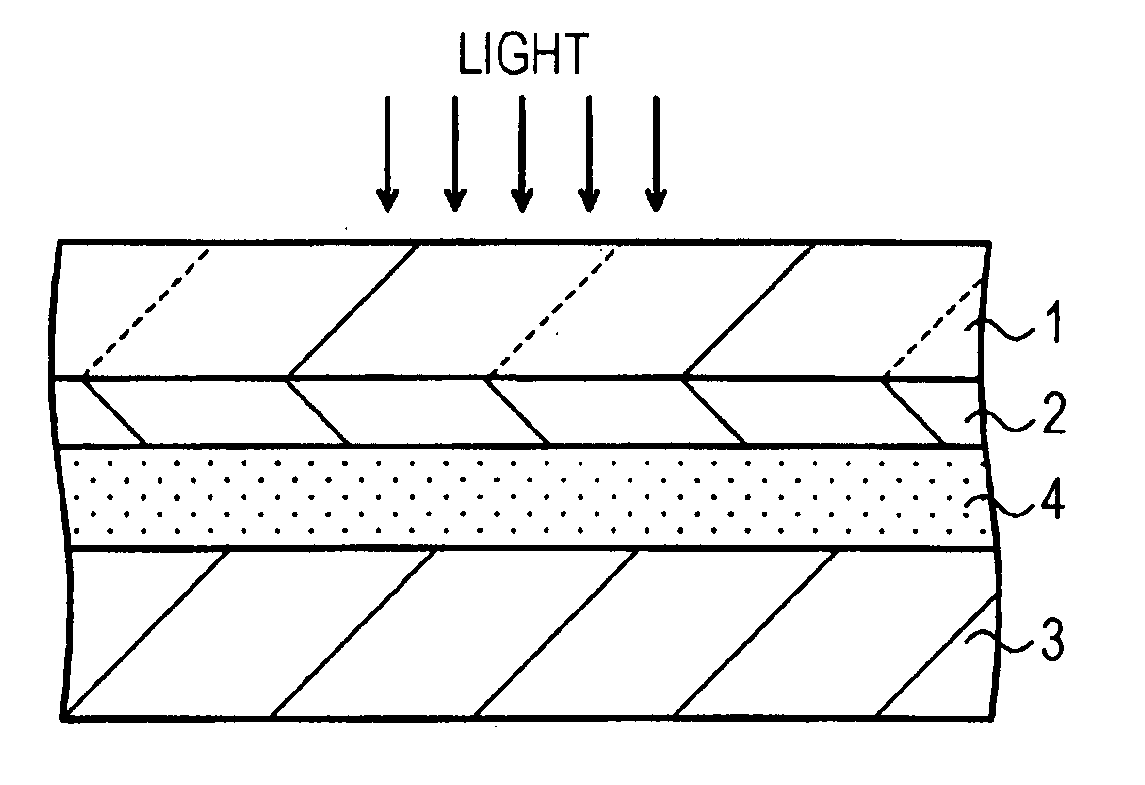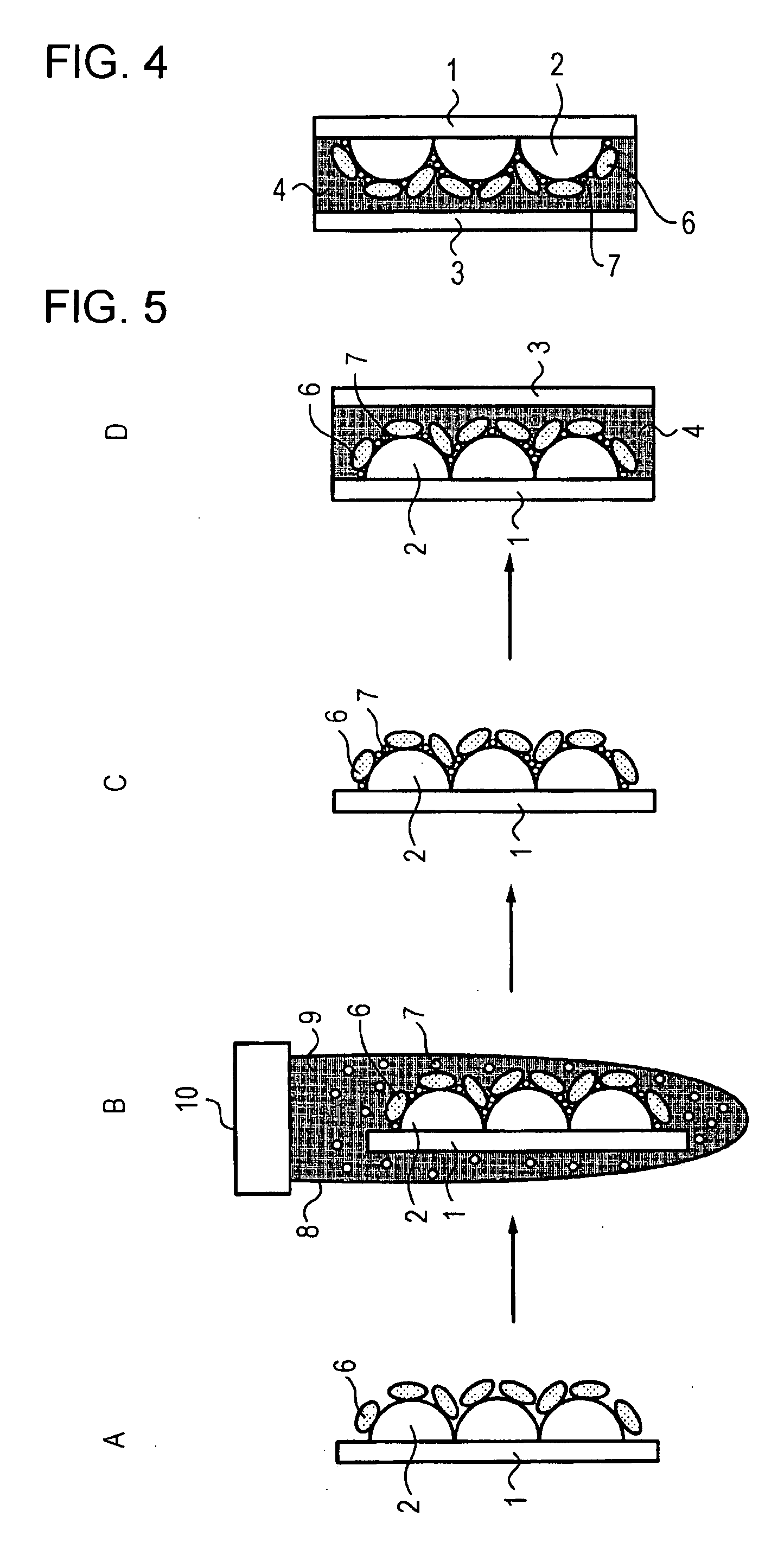Dye-Sensitized Photovoltaic Device, Method for Making the Same, Electronic Device, Method for Making the Same, and Electronic Apparatus
a photovoltaic device and dye sensitization technology, applied in the direction of electrolytic capacitors, electrochemical generators, transportation and packaging, etc., can solve the problems of inevitably decreasing photoelectric conversion efficiency, and achieve the effect of increasing the catalytic effect of oxidation-reduction, improving open circuit voltage and short circuit current, and increasing surface area
- Summary
- Abstract
- Description
- Claims
- Application Information
AI Technical Summary
Benefits of technology
Problems solved by technology
Method used
Image
Examples
example 1
[0072]TiO2 fine particles were used as the semiconductor fine particles. A paste containing dispersed TiO2 fine particles was prepared with reference to Document 4 as follows. To 750 mL of a 0.1 M aqueous nitric acid solution, 125 mL of titanium isopropoxide was gradually added dropwise at room temperature under stirring. Upon completion of dropwise addition, the solution was moved to a thermostat at 80° C., followed by stirring for 8 hours to obtain a white semitransparent sol solution. The solution was left to cool to room temperature, filtered with a glass filter, and diluted to 700 mL. The resulting sol solution was transferred to an autoclave, subjected to hydrothermal treatment at 220° C. for 12 hours, and treated with ultrasonic waves for 1 hour to conduct dispersion. The resulting solution was concentrated with an evaporator at 40° C. so that the TiO2 content was 20 wt %. To the concentrated sol solution, 20 wt % of polyethylene glycol (molecular weight: 500,000) with respec...
examples 2 to 10
[0081]Dye-sensitized photovoltaic devices were prepared as in Example 1 except that the dyes and alkaline compounds shown in Table 1 were used.
PUM
 Login to View More
Login to View More Abstract
Description
Claims
Application Information
 Login to View More
Login to View More - R&D
- Intellectual Property
- Life Sciences
- Materials
- Tech Scout
- Unparalleled Data Quality
- Higher Quality Content
- 60% Fewer Hallucinations
Browse by: Latest US Patents, China's latest patents, Technical Efficacy Thesaurus, Application Domain, Technology Topic, Popular Technical Reports.
© 2025 PatSnap. All rights reserved.Legal|Privacy policy|Modern Slavery Act Transparency Statement|Sitemap|About US| Contact US: help@patsnap.com



